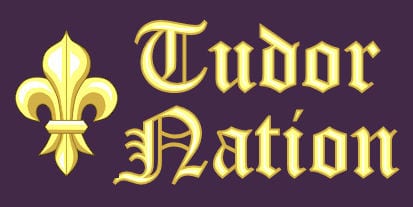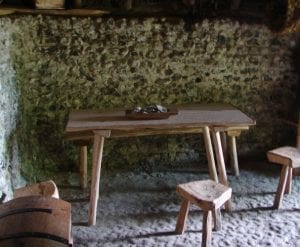Henry VIII – Tudor Culture Timeline
This timeline includes details of culture, art, travel and education in the reign of King Henry VIII
Please Note: This timeline is a work in progress
1509 (22nd April)
Henry VIII’s Character
Henry VIII was financially secure – his father, Henry VII had left around 1 million pounds in the treasury. The new King modelled himself on his predecessor Henry V and swore to continue Henry V’s war with France.
1509 (after April)
King Henry VIII lifestyle
As King, Henry took no part in the government of the country and would only attend to necessary state matters at a time that suited him, generally after he had hunted or played sport.
1509 (23rd June)
Henry and Catherine to the Tower of London
Henry and Catherine took part in a special Coronation procession as they made their way to the Tower of London to await their coronation. Henry wore a cloth of gold tunic with a red velvet robe. Catherine wore an embroidered gown of white satin and a coronet of rich stones on her head.
1509 (August)
Henry and Catherine embarked on a Progress
To avoid an outbreak of plague in London, Henry and Catherine left on a progress. They visited Hamworth, Sunninghill, Woking, Farham, Esher, Enfield and Waltham.
1509 (Late Summer)
Erasmus
William Blount, Lord Mountjoy, invited the Humanist reformer, Erasmus, to England. He told him that the old regime was over and that England was full of promise for young men of learning.
1509 (September)
Henry and Catherine returned to London
king Henry and Catherine of Aragon returned to London. They stayed at Richmond Palace.
1510 (1st January)
New Year’s Day
It was the custom for the King and courtiers to exchange gifts on New Year’s Day. Henry gave Catherine a beautifully illuminated missal (a book containing the Roman Catholic Service of Mass for one year).
1510 (6th January)
Twelfth Night
A jousting tournament was held to celebrate Twelfth Night. Henry had been advised not to take part in jousts, due to the danger and lack of heir to the throne. However, he decided he could stay away no longer and took part heavily disguised. The ‘unknown knight’ showed great skill and when he was revealed as the King was cheered and applauded. Henry regularly took part in jousts from this point.
1510 (May)
Henry VIII affair with Anne, Lady Hastings
It was rumoured that Henry was actively pursuing Anne, Lady Hastings, wife of Lord Hastings, sister of the Duke of Buckingham. In medieval times it was normal for the nobility to take a mistress when their wives were pregnant. Lady Anne’s sister, Lady Fitzwalter, had heard the rumour and told the Duke of Buckingham who told Lord Hastings. Hastings duly removed his wife from court and placed her in a convent. Henry was furious and ordered Catherine to dismiss Lady Fitzwalter for spying. Catherine was upset to hear of the affair.
Mid January 1511
King Henry gave thanks
Henry visited the shrine of Our Lady at Walsingham to give thanks for the birth of his son and heir, Henry.
Mid January 1511
Celebrations
The royal court moved to the Palace of Westminster where banquets and tournaments were held to celebrate the birth of Prince Henry. The prince remained at Richmond in the care of his nursemaids.
Autumn 1511
Progress of England
Henry VIII and Catherine went on a progress of England.
October 1511
Erasmus in England
The Humanist scholar Desiderius Erasmus visited London. He stayed in the home of Thomas More.
during 1512
Thomas Boleyn sent to the Netherlands
Thomas Boleyn was sent on his first diplomatic mission to Margaret of Austria, Regent of the Netherlands. While there he succeeded in securing a place for his daughter, Anne, in Margaret’s service.
during 1512
Thomas Cromwell returned to England
Thomas Cromwell, aged 28 years, returned to England having spent the last ten years on the continent. He began to study common law.
Spring 1513
Anne Boleyn sent to the Netherlands
Anne Boleyn was sent in the care of a knight named Broughton, to begin her service in the household of Margaret, Regent of the Netherlands.
during 1514
The Tudor Navy
A new ship,’The Princess Mary’, nicknamed ‘The Great Galley’ was launched. The Tudor Navy now included 31 ships.
early October 1514
Princess Mary travelled to France
Princess Mary began her journey to France. Wolsey had organised a grand procession from London to Dover. It was a windy October day when Mary said farewell to her brother on the quayside. Although she had resigned herself to the marriage, Mary was still not happy about it. She was accompanied by a number of English noblemen as well as her newly appointed ladies.
May 1515
Utopia – Thomas More
While in the Netherlands, Thomas More began writing a book which he would later call ‘Utopia’.
18th May 1515
Albany returned to Scotland
John Stewart, Duke of Albany, returned to Scotland. He was escorted to Edinburgh where he demanded that Margaret hand over her sons James and Alexander. Margaret refused and shut herself and her children in Stirling Castle.
Late August 1515
Margaret escaped from Edinburgh
Margaret Tudor, who was heavily pregnant with Archibald Douglas’s child, escaped from Edinburgh. She was helped by her husband, his brother George Douglas and Lord Home. She was taken to Blackadder Castle near the English border where she awaited permission from her brother to enter England.
30th September 1515
Margaret Tudor escaped to England
Margaret had finally received permission to enter England. She crossed the border and travelled to Harbottle castle near Otterburn in Northumbria which was owned by Lord Dacre.
25th October 1515
Mary Rose Launched
A new galley, ‘The Mary Rose’ was launched. The King attended the ceremony accompanied by his wife and sister. The new galley could carry one thousand men, had 120 oars and 207 guns. After the launching ceremony a banquet was held on board the ship.
During 1516
Utopia by Thomas More published
Thomas More’s book Utopia was published in Louvain. Written in Latin, it describes an imaginary society of pagans living on a remote island in accordance with the laws of natural virtue
Spring 1516
Margaret Tudor arrived at Court
Henry VIII invited his sister, Margaret, and her daughter Margaret Douglas, to court. She was met at Tottenham by the King and entered the city in style riding a white palfrey sent to her by Catherine of Aragon.
7th July 1517
Joust at Greenwich
Because there were so many foreign ambassadors in London, Henry organised a joust in the newly built tiltyard at Greenwich. Edward Guildford was appointed Marshall of the Jousts. Henry was head of the 14 challengers while the Duke of Suffolk was head of the 14 answerers. The joust was followed by a banquet and dancing.
mid July 1517
Sweating Sickness
A new form of plague reached England. It was called the Sweating sickness because the victim felt unwell before breaking out in a profuse sweat. After four or five hours a crisis was reached where the victim either died or, more rarely, recovered. Henry and the court left London for Windsor Castle.
August 1517
Wolsey survived Sweating sickness
Thomas Wolsey, who had been left in London to deal with state affairs, contracted sweating sickness. He survived the disease but was weakened and resorted to dealing with government issues from his bed.
December 1517
Christmas
The English court was closed for Christmas due to the outbreak of Sweating sickness. Henry was fearful of illness and disease and refused to receive any foreign ambassadors and kept himself shut away.
During 1518
College of Physicians
Thomas Linacre founded the College of Physicians. It issued licenses to all medical practitioners and attempted to stop unqualified quacks from treating sick people.
Early March
Sweating Sickness
The court moved to Abingdon, Oxford to avoid an outbreak of sweating sickness in London.
March
Catherine visited Merton College
Catherine of Aragon paid a visit to Merton College Oxford. She took a great interest in education and contributed funds to educational establishments. She was well received by the Masters and students at Merton.
7th October 1518
Celebrations for the Universal Peace
A tournament was held to celebrate the signing of the Treaty of London and the betrothal of Princess Mary to the Dauphin. The tournament was followed by a Supper Party during which a pageant was performed depicting Christian crusaders defeating the Turks.
During 1519
Greek department at Oxford University
Thomas Wolsey established a Greek department at Oxford University. Although the language had been taught at times in the past, this was the first time it had been properly established.
Autumn 1519
Anglo-French Summit proposed
Following the election of Charles as Holy Roman Emperor, England and France were united in their fear of Charles’s great power. It was proposed that a summit meeting between Francis and Henry be held. It was agreed that English and French representatives would make the arrangements, overseen by Thomas Wolsey who would make final decisions.
Published Feb 17, 2021 @ 2:45 pm – Updated – Dec 7 2024
Harvard Reference for Henry VIII Tudor Culture Timeline:
Heather Y Wheeler. (2021 – 2025). Henry VIII – Tudor Culture Timeline Available: https://www.tudornation.com/henry-viii-tudor-culture-timeline Last accessed June 14th, 2025

